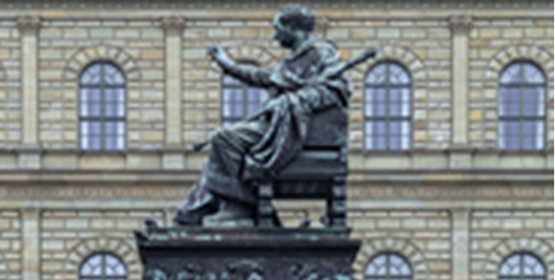Historic Conservation

Laser cleaning is a highly effective and gentle tool for restoring historic monuments and sculptures, particularly for substrates like bronze, stone, and wood, which require careful handling to preserve their integrity. Here’s how lasers are used on these materials, along with the interdisciplinary collaboration essential for a successful restoration:
Laser Cleaning Applications in Monument and Sculpture Restoration
Bronze and Metal Restoration
- Oxidation and Corrosion Removal: Lasers can selectively remove corrosion and oxidation layers from bronze and other metals without damaging the original metal beneath. This is especially useful for outdoor monuments exposed to weathering.
- Removing Contaminants Without Abrasion: Traditional methods often require chemicals or abrasive tools, which can harm the patina or details on bronze. Laser cleaning can effectively lift dirt, pollutants, and biological growth while preserving the original surface.
Stone Restoration (Marble, Limestone, Granite)
- Pollution and Dirt Removal: Lasers are highly effective at removing pollutants, soot, and grime from stone surfaces, often accumulated over decades or centuries, restoring the stone’s original color and detail.
- Graffiti Removal: Laser cleaning is precise enough to remove graffiti and paint without causing micro-fractures or abrasion on the stone. This helps protect the integrity of the material while maintaining its historical appearance.
- Conserving Patina and Aging Effects: The laser's precision allows conservators to clean only selected layers, preserving natural patinas and signs of aging that add historical value.
Wood Restoration
- Removing Surface Contaminants and Mold: Lasers can remove accumulated dirt, mold, and pollutants from wood surfaces, which is especially useful for outdoor wood monuments or sculptures.
- Cleaning Without Moisture or Chemicals: Laser cleaning avoids introducing moisture, which can lead to swelling or warping in wood. It also eliminates the need for chemicals that could be absorbed by the wood and potentially cause damage over time.
Essential Professional Disciplines in Monument and Sculpture Restoration
Conservation Specialists
- Art Conservators: Experts in art and historic materials, conservators guide decisions about how much cleaning is appropriate and how to preserve the piece’s original qualities, patina, and integrity.
- Material Scientists: Material scientists analyze the substrate to understand its composition, which informs the laser’s settings and approach, ensuring that cleaning is both safe and effective.
Historians and Archaeologists
Structural Engineers
Environmental Scientists and Biologists
Building Sciences and Architectural Experts
Architectural experts, particularly those with experience in historical structures, advise on restoration techniques and compatibility with surrounding structures or environments, especially in urban or architectural heritage sites.
Laser cleaning provides a unique and effective approach to historic restoration, but success relies on the combined expertise of
conservation, engineering, and material science professionals, ensuring that the monument or sculpture is preserved with care,
precision, and respect for its historical significance.
